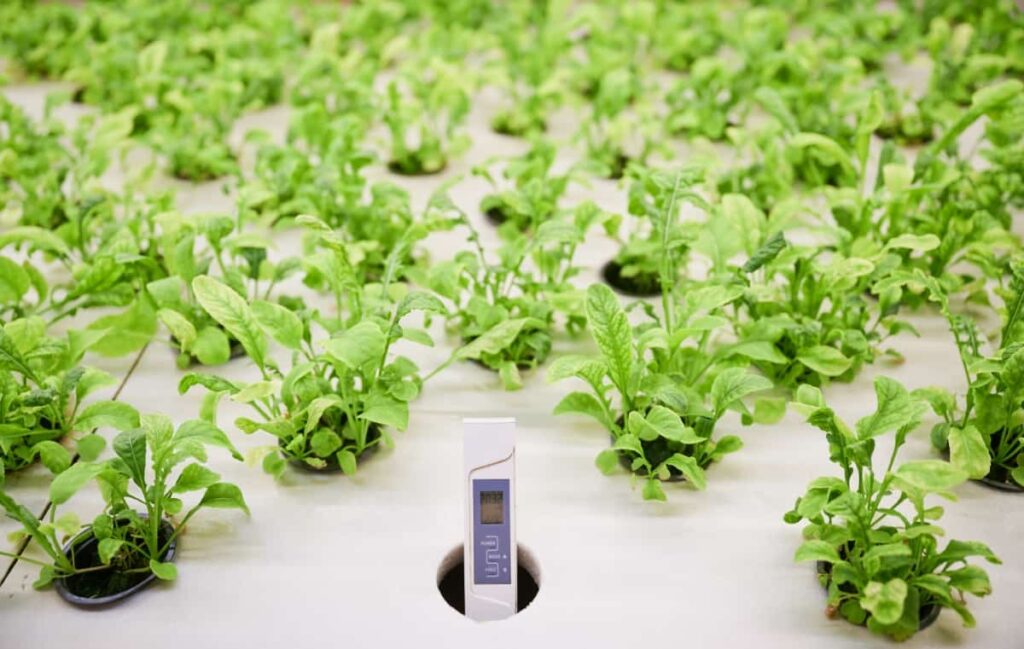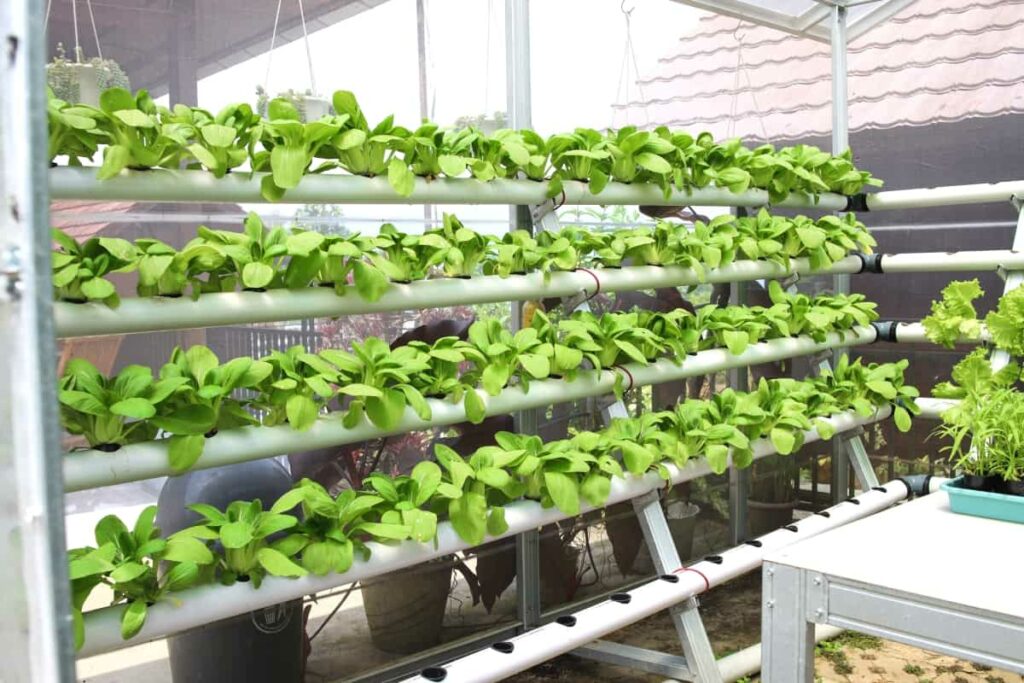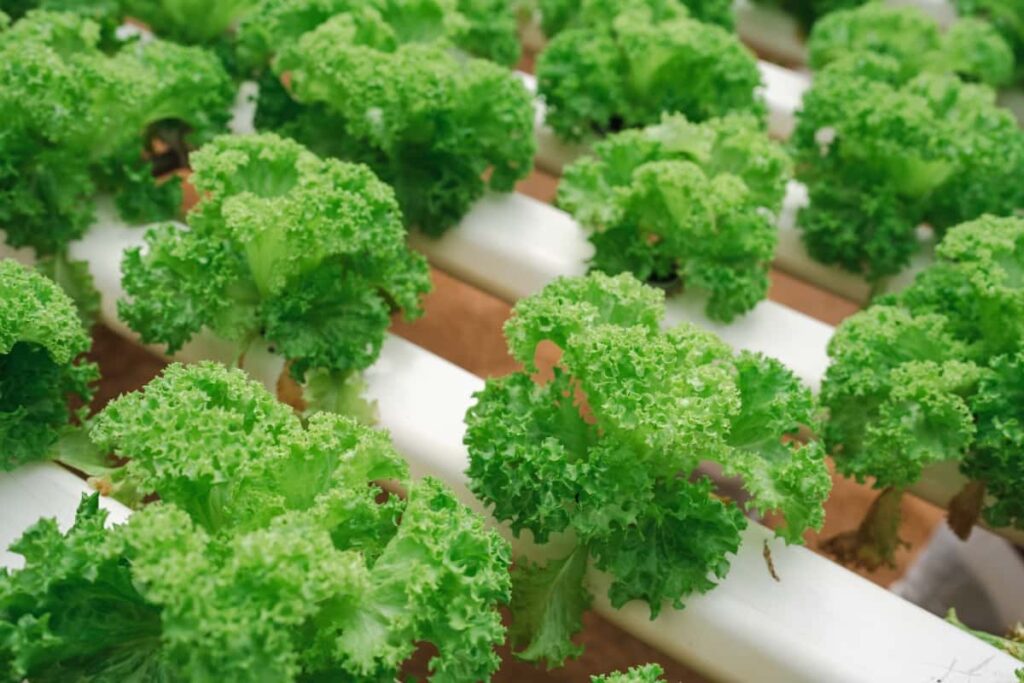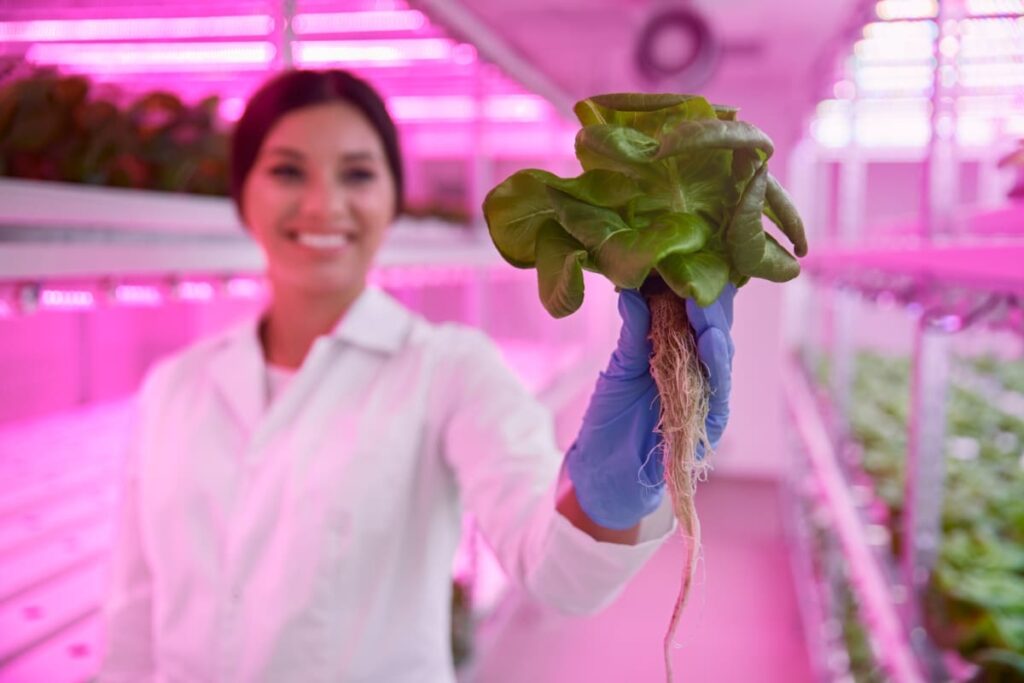Hydroponic gardening is a unique method that allows plants to thrive without traditional soil. Instead, they are nourished by a nutrient-rich solution directly delivered to their roots. The hydroponic nutrient solution, also known as hydroponic fertilizer or plant food, is a specially formulated mixture of nutrients that provides essential elements for plants to grow and thrive without soil.
Importance of Nutrient Solutions
The importance of nutrient solutions cannot be overstated in hydroponics. By using hydroponic nutrient solutions, growers can achieve faster growth rates, increased yield potential, and better overall plant health compared to traditional soil-based cultivation methods. The ability to tailor nutrient ratios based on specific growth stages or plant species further enhances productivity.

Hydroponic Nutrients Solution Recipe
Basic Components of a Nutrient Solution
Macro-Nutrients (Nitrogen, Phosphorus, Potassium)
Macro-nutrients are those that plants require in large amounts, such as nitrogen, phosphorus, and potassium. These nutrients play a main role in plant development, from promoting leafy green foliage to supporting robust root systems.
Micro-Nutrients (Calcium, Magnesium, Iron, etc.)
Micro-nutrients are needed in smaller quantities but are equally essential for healthy plant growth. Examples of micro-nutrients include calcium, magnesium, iron, and zinc. These micronutrients help regulate various biochemical processes within the plant cells and ensure proper enzyme function.
Understanding Nutrient Ratios
Ideal Ratios for Different Growth Stages (Vegetative, Flowering, Fruiting)
Each stage of plant development requires specific nutrients in varying proportions to ensure optimal growth and yield. During the vegetative stage, plants primarily require nitrogen (N), phosphorus (P), and potassium (K) for healthy leafy growth. The recommended ratio during this phase is often higher in nitrogen to encourage robust foliage development.
As plants transition into the flowering stage, they need a shift towards higher phosphorus levels to support budding and blooming. Fruiting plants have unique nutrient requirements as their focus shifts toward producing fruits or vegetables. This stage typically demands a balanced ratio of macronutrients such as nitrogen, phosphorus, and potassium, along with an increased need for certain micronutrients like calcium, magnesium, iron, and others.
Adjusting Ratios Based on Plant Species
It’s important to note that different plant species may have specific preferences when it comes to nutrient ratios. Some plants might thrive with slightly lower or higher concentrations of certain elements than others. By observing your plants closely and adjusting nutrient solutions accordingly, you can ensure maximum productivity.
Water Quality and pH Considerations
Importance of Water Quality in Hydroponics
Water quality plays a major role in ensuring the success of your plants. Unlike traditional soil-based gardening, where nutrients are naturally present in the soil, hydroponic systems rely on nutrient solutions to provide essential plant growth elements. This means that the water you use as a base for your nutrient solution needs to be clean and free from contaminants.
Maintaining Optimal pH Levels for Nutrient Uptake
Maintaining optimal pH levels ensures that plants can effectively absorb nutrients from the solution. The ideal pH level for most hydroponic crops falls between 5.5 and 6.5, although this may vary slightly depending on specific plant requirements. If the pH level deviates too far from this range, it can hinder nutrient uptake and lead to deficiencies or toxicities. To adjust pH levels, you can use pH up or down solutions specifically designed for hydroponics.
Recipe for General Purpose Nutrient Solution
Recommended Concentrations for Each Nutrient
To start, gather all the necessary components for your nutrient solution. The main players in this mix are macro-nutrients and micro-nutrients. Macro-nutrients include nitrogen, phosphorus, and potassium – these are essential for plant growth and development. Micro-nutrients such as calcium, magnesium, iron, and others provide additional support.
Mixing Instructions
Mixing instructions may vary depending on whether you’re using a powdered or liquid fertilizer. Always add nutrients directly to water rather than adding water into concentrated nutrients; this ensures proper dispersion throughout the solution. Use pH strips or meters to monitor acidity levels regularly and adjust accordingly if needed.
In case you missed it: The Influence of Soil pH on Fertilizer Management and Nutrient Cycling: Key Considerations

Customizing Nutrient Solutions for Specific Plants
Nutrient Requirements of Common Hydroponic Plants (Lettuce, Tomatoes, Peppers, etc.)
Different plants have unique nutrient requirements that must be met for them to thrive. Lettuce, tomatoes, peppers – each plant has its own specific needs when it comes to nutrients. Lettuce, for example, requires a nutrient solution that has high levels of nitrogen and potassium but lower in phosphorus.
This helps promote leafy growth and prevents the lettuce from becoming too woody or bitter-tasting. On the other hand, tomatoes need a nutrient solution with a higher phosphorus content to support fruit development and enhance flavor. Peppers require a well-balanced nutrient solution with adequate amounts of nitrogen, phosphorus, and potassium.
Tailoring Nutrient Solutions Based on Plant Needs
Researching optimal ratios for different growth stages can help guide you in creating custom nutrient solutions that meet these needs. By adjusting the ratios of macro-nutrients like N, P, K (nitrogen, phosphorus, and potassium), as well as micro-nutrients like calcium (Ca) and magnesium (Mg), you can ensure that your plants receive the right balance of nutrients at every stage of their growth cycle.
Organic vs. Synthetic Nutrient Solutions
Pros and Cons of Organic Nutrients
The biggest advantage of using organic solutions in hydroponics is their natural composition. The organic nutrients are derived from plant or animal sources, making them more sustainable and environmentally friendly. Organic nutrients also tend to be slower-release, supplying essential elements over time.
However, it’s important to note that there are downsides too. Organic nutrients may contain trace amounts of impurities or pathogens if not properly sourced or processed. Also, they can be more expensive compared to synthetic options due to their production methods.
Synthetic Nutrient Formulations and Their Benefits
Synthetic nutrient formulations offer some unique benefits as well. These solutions are specifically engineered to provide precise ratios of macro and micro-nutrients for optimal plant growth. They are often highly concentrated, allowing for easier storage and transportation. Another advantage of synthetic nutrients for hydroponics is their consistency in composition. Unlike organic options, which may vary in nutrient content due to natural variations, synthetic formulations ensure that plants receive consistent nutrition throughout their growth cycle.
Preparing and Storing Nutrient Solutions
Proper Storage Containers
It’s important to choose the right storage containers for your hydroponic nutrient solutions. Look for containers that are made from materials such as glass or opaque plastic, which can help prevent light exposure and minimize the degradation of the nutrients. Avoid using containers made from materials like metal or clear plastic, as they may react with the solution or allow light penetration.
Shelf Life and Stability of Nutrient Solutions
Shelf life can change based on factors such as nutrient formulation and storage conditions. Generally, most commercially available hydroponic fertilizers have a shelf life of about 1-2 years if stored properly. Regularly monitoring the pH levels and overall condition of your stored nutrient solution is also important.
Monitoring and Adjusting Nutrient Solution
Regular Testing of Nutrient Levels
One strategy for monitoring nutrient levels in hydroponics is through regular water testing. The test can be done using a pH meter or test strips to measure the acidity or alkalinity of the solution. Additionally, conducting electrical conductivity (EC) tests helps determine the overall concentration of nutrients in the solution.
Strategies for Correcting Deficiencies or Imbalances
If deficiencies or imbalances are detected, there are several strategies for correcting them. One approach is adjusting the nutrient ratios in hydroponics by adding specific elements to rebalance the solution. Another strategy involves flushing out excess nutrients from the system by replacing the nutrient solution with fresh water. This helps prevent toxic build-up and allows for a more balanced environment for plant uptake.
In case you missed it: Hydroponics in Urban Apartment Gardening: Benefits and How to Set Up Guide

Advanced Nutrient Solution Techniques
Supplemental Additives (Root Enhancers, Bloom Boosters)
Supplemental additives are a game-changer when it comes to maximizing the potential of your hydroponic garden. Root enhancers, for example, can stimulate root growth and increase nutrient absorption in plants. This means more robust plants that can take up nutrients more efficiently. Bloom boosters, on the other hand, are designed to enhance flowering and fruiting stages by providing essential elements like phosphorus and potassium. These additives can significantly improve yields and promote bigger blooms or fruits.
Hydroponic Nutrient Solution Recirculation and Automation Systems
The advanced technique in hydroponics is the use of recirculating nutrient solutions. Instead of constantly replacing the entire solution, recirculation systems allow you to reuse the same solution while maintaining its optimal nutrient levels. Automation systems have revolutionized hydroponic gardening by taking care of routine tasks such as monitoring pH levels, adjusting nutrient concentrations, and controlling lighting cycles.
In case you missed it: Revolutionizing Agriculture: Exploring the Potential of Hydroponic Farming in Nigeria

Conclusion
Hydroponic nutrient solutions offer a multitude of benefits that make them a good choice for indoor gardening enthusiasts. This innovative gardening technique has gained popularity due to its benefits over traditional soil-based cultivation. By delivering nutrients directly to the plant roots in a controlled environment, hydroponics allows for faster growth rates and higher yields.
- Profitable Village Farming Business Ideas in 2024
- High-Yield Aquaculture: Fast-Growing Fish for Farming
- Effective Fish Pond Construction Techniques for Beginners
- Irrigation and Water Management in Pineapple Farming
- Blossom to Harvest: Mastering Flowering and Pollination in Papaya Farming
- Pig Fattening Essentials: From Selection to Sale for Beginners
- Raising Wagyu Cattle: A Complete Guide for Premium Beef Production
- Soil Types and Their Water Holding Capacity
- Optimizing Irrigation Schedules for Coconut Groves for Enhanced Yield
